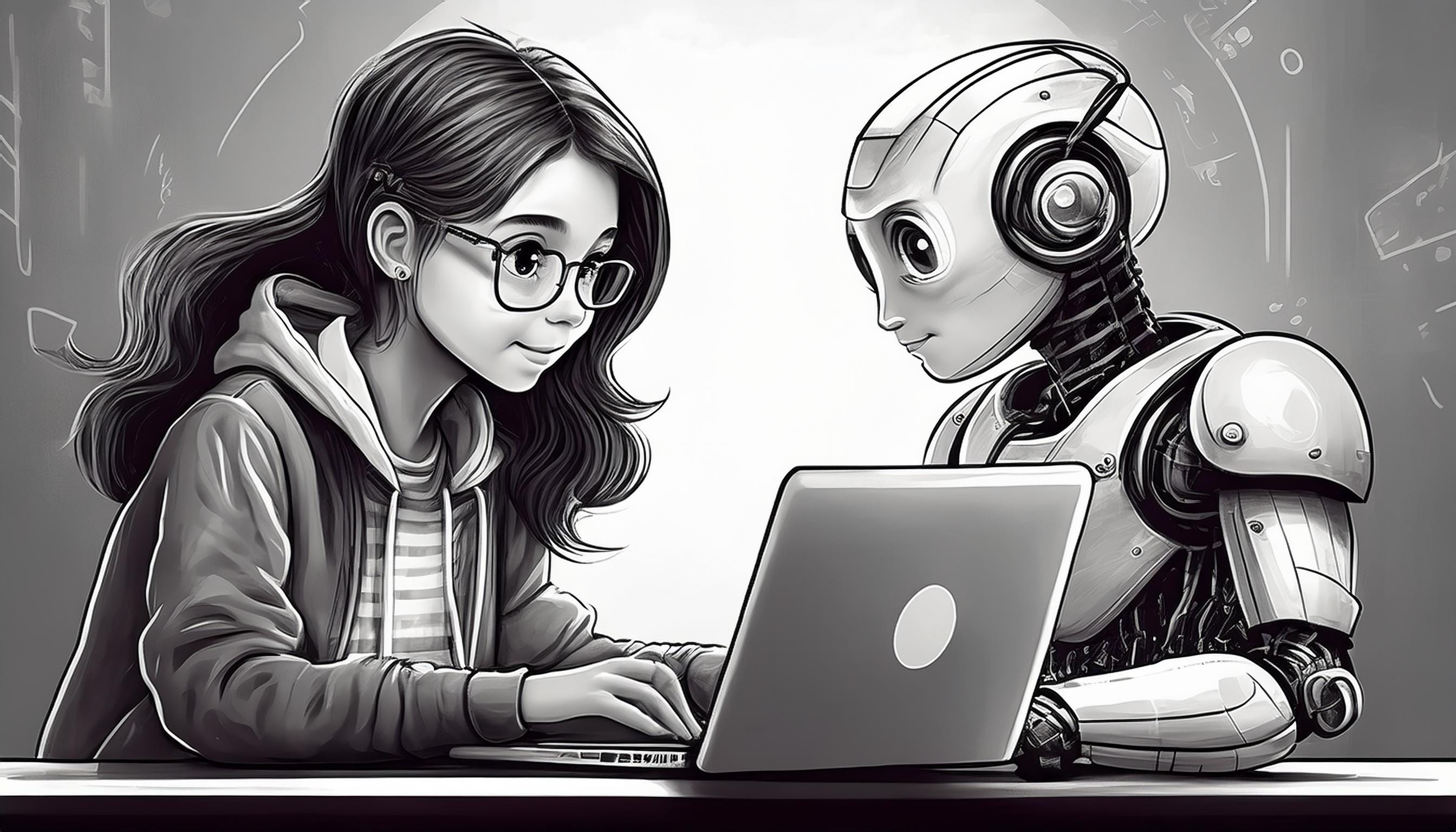In the dimly lit newsroom, the hum of typewriters filled the air, mingling with the smell of ink and old paper. An editor, perched behind a cluttered desk with a half-empty cup of coffee, would summon a reporter with a wave of the hand. The reporter, still scribbling notes from their last assignment, would approach, ready for what was next. The editor would lay out the scene: an assignment, crisp and urgent, slid across the desk.
“Here’s the angle,” the editor would say, voice low but steady. "Focus on this. Ask the tough questions. And don’t forget to talk to those sources we’ve been tracking.” A vision had already formed in the editor’s mind—a story, raw and alive, waiting to be crafted into something meaningful. The editor outlines key ideas and parameters, setting the stage for what the story should convey. It wasn’t just about gathering facts; it was about shaping a narrative that would strike at the heart of readers, one that would command attention when it hit the stands in the morning. The reporter, equipped with a keen sense of observation and a knack for storytelling, drafts the initial version, brimming with raw potential.
In the Old Newspaper World:
In this traditional newsroom setting, the editor’s role was paramount. With a meticulous eye, the editor would refine the story, reshaping it for clarity, tone, and impact. This involved:
Structural Revisions: The editor would rearrange paragraphs, ensuring that the story flowed logically and compellingly.
Content Enhancement: They would fill in gaps, add necessary context, and sharpen the focus on key points.
Style and Tone Adjustments: The editor would adjust the language to fit the publication’s voice, ensuring that the story resonated with its readers.
The editor’s influence transformed the reporter's draft into a polished, engaging article. This collaborative process between reporter and editor was where the highest-order thinking of writing truly came into play. The editing phase was not just about fixing errors; it was about re-envisioning and elevating the work.
In the Modern Classroom with AI:
Fast forward to today’s educational landscape, where AI tools will step into the role of the reporter, and students, like the editor, will be tasked with guiding and refining the draft. The editor’s role, however, becomes even more critical. Now, the editor needs to be the creative force, shaping not just words but the entire framework for the AI to work from. Here’s how this modern “newsroom” might operate:
AI as the Reporter: AI generates initial drafts based on prompts carefully crafted by students. As "editors," students provide clear direction and structure. Students must provide the seed ideas that AI can build on, ensuring the content is meaningful and relevant. The quality of the AI's first output depends on how well we define our purpose, audience, and desired outcomes. This is like giving the AI precise instructions, so it produces something useful. This also reinforces the importance of teaching students how to prompt AI effectively. Prompt engineering becomes the skill that replaces the first draft writing process, where instead of writing every word, we design and refine prompts to achieve a polished output. Just as reporters chase leads and pull together various sources, AI processes vast amounts of information, pulling from data and patterns to generate the content. However, it’s not doing the “detective” work we once relied on reporters for—it’s following the path we lay out in our prompt. The AI, like a reporter, provides a base that’s rich in potential but still needs plenty of fine-tuning.
Students as the Editor: Just as an editor refines a reporter's draft, students will now engage in deep editing. They will work through multiple AI outputs, clarifying and improving until the final result is just right. In this editor role, students also guide AI to capture their human voice:
Fine-tuning the output: Students will need to read critically to determine how to reorganize content for accuracy and coherence. They will also refine it to reflect their personality, humor, or style. This step ensures the writing feels authentic.
Injecting empathy and nuance: AI can miss the emotional subtleties, so students will need to infuse empathy, warmth, or authority based on the audience we’re speaking to.
Customizing for the audience: Students will consider their audience to adjust tone. Whether we’re being conversational for peers or more formal for colleagues, the connection still stems from how students personalize the message in a way that feels right for the writing situation.
In essence, AI assists with efficiency, but the heart of the message, the human touch, comes from us. It’s about blending the machine's capabilities with our authentic voice to create something truly impactful.
The Writing Shift Finally Lets Us Focus on Editing
The Traditional Classroom Approach: Historically, editing was pushed to the end of the process, almost like an afterthought. By the time students got to it, they were often tired or simply ready to move on. The "editing" phase often amounted to surface-level changes based on teacher feedback—correcting grammar or tweaking a sentence here and there without deeper reflection. It’s like students were checking off boxes rather than rethinking their work.
Why the Editing Phase Has Always Been Difficult: Editing requires metacognition—thinking about thinking. It’s the phase where students need to step back and ask, “Is this what I meant to say?” or “Is this organized in the best way?” For many students, this level of abstract thinking is hard, especially when they’re already drained from the effort of getting the first draft down.
AI as a Game-Changer: AI, by speeding up the drafting process, brings the editing phase to the forefront. Now that students can generate content more easily, they have more mental space and time to focus on the higher-order thinking that editing requires. Instead of spending most of their energy just getting words on the page, they can dive deeper into how to improve those words, why they’re making changes, and what will enhance their message.
Higher-Level Thinking in Editing: The editing phase is the highest level of thinking in the writing process. It’s where students critically analyze the work—considering organization, tone, word choice, and audience. When students work with AI, the shift from drafting to editing can encourage a more thoughtful, reflective approach to writing. They’re no longer just tweaking small things—they’re making strategic decisions about how to shape their ideas.
Empowerment: This process is also more empowering. When students interact with AI-generated content, they have the chance to refine and adapt it according to their own goals and voice. They aren’t passive recipients of feedback anymore; they’re active decision-makers. This is a shift— from being just a writer to being the editor-in-chief who controls the collaboration with AI.
Foundational Writing Skills Come First
Before students can become editors, they need to be writers. And for younger children, writing is much more about learning the mechanics—how to construct sentences, recognize parts of speech, and organize their thoughts into a coherent narrative or argument. In early elementary school, the focus is on mastering these building blocks, and that process can’t be rushed. AI can’t replace the need for students to develop these foundational skills.
At this stage, AI can still be used, but in a more supportive role. It can help with generating ideas, prompting students with sentence starters, or even offering suggestions on word choice. However, the teacher’s role in scaffolding the writing process remains essential, as students need hands-on practice with the mechanics before they can step into more sophisticated editing tasks.
Over-Reliance on AI
Just as editors worried about a reporter relying too heavily on sources without critical analysis, there’s a risk of students becoming too dependent on AI. The AI-generated draft isn’t perfect. Students must learn to critically assess and improve it. We must design assignments that require significant revision and reflection to ensure students actively engage in the editing process and don’t just accept AI-generated content as final.
Assessing the Modern Writing Process
In the AI-enhanced writing environment, how teachers assess student writing will need to evolve. Teachers will focus on how students interact with AI, similar to how editors assess a reporter’s approach. We will have to develop effective ways to evaluate their prompts, the revisions they make, and their engagement with the content.
Shifting from Product-Based to Process-Based Assessment: In the AI era, students may produce polished final pieces with the help of AI tools, but we need to evaluate how they got there. This means focusing on their ability to work with AI as a collaborator rather than relying on it as a shortcut. Teachers need to assess the decision-making process:
What prompts did the student give the AI?
How did they revise AI-generated content?
Where did they inject their voice and personal insights?
These questions can guide a new framework for assessment.
Documenting AI Collaboration: Teachers could implement tools such as writing journals or digital logs where students document their interactions with AI throughout the writing process. For example, students might record the initial prompt they gave the AI, how they responded to suggestions, what changes they made, and where they overruled AI-generated content. This helps teachers see how students are thinking and making decisions, not just the final product.
Rubrics for the AI Process: A rubric that evaluates both the writing and the student’s use of AI could be developed. Categories might include:
Clarity and specificity of prompts
Critical evaluation of AI-generated content (e.g., did the student accept everything or selectively revise?)
Integration of personal voice and ideas into the AI-assisted text
Reflective comments on how AI enhanced or hindered their work
Promoting Accountability Through Dialogue
In the AI era, students must also be held accountable to talk about why they made certain decisions in their writing, including how they collaborated with AI. Here’s what that could look like in the classroom:
Exit Interviews: An exit interview with the teacher could be a regular practice. In this one-on-one setting, students would explain their use of AI, how they developed their ideas, and what parts of the work were their own vs. AI-generated.
Peer Review Presentations: Another option could be peer presentations, where students explain their writing process and decisions to classmates. This encourages accountability and reflection. Knowing they will have to explain their choices encourages students to remain engaged and take ownership of their work. In the presentation, students could answer questions like:
How did AI help shape your writing?
What parts of your essay did you change, and why?
How did you ensure your voice and ideas were present in the final product?
Classroom Discussions on AI Use: As part of these presentations, the class could engage in discussions about the role of AI in their writing. Students could compare notes on how they used the AI, what worked, and what didn’t. This not only encourages deeper understanding but also builds a culture of reflection around the use of AI.
Conclusion
The integration of AI into the classroom is set to transform the writing process. Much like editors in traditional newsrooms, students will take on a guiding role. While AI swiftly assembles the raw material, the true work belongs to the student, the editor, who breathes life into the text—shaping, refining, and adding their own voice to the story. This shift allows students to engage in deeper, reflective editing rather than simply drafting, promoting higher-order thinking. Yet, for younger learners, foundational writing skills remain critical, and the risk of over-reliance on AI must be carefully managed. In the AI-enhanced writing process, assessment should prioritize the process of how students interact with AI, focusing on their decision-making over the final product. Encouraging students to discuss their writing fosters accountability and ensures their voice remains central in the process.
In my vision for the future of writing with AI, students can still emerge as both the architects and stewards of their own written expression.






